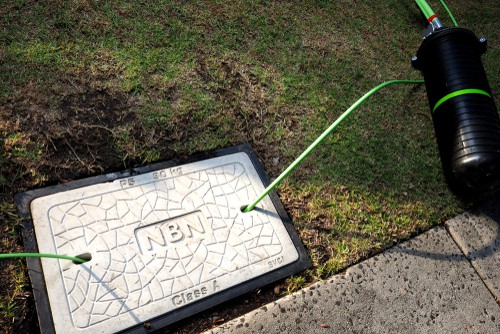The latest broadband speed data released by the Australian Competition and Consumer Commission (ACCC) has revealed both encouraging and concerning results, confirming that while many customers are experiencing relatively high speed internet, seven per cent have less than half the maximum speed of their plan.
This second ACCC Measuring Broadband Australia (MBA) report provides new data on the performance of NBN fixed-line services, expanding the report to cover six major ISPs – Aussie Broadband, iiNet, MyRepublic, Optus, Telstra and TPG.
Overall, 70 per cent of all tests continued to achieve download speeds of above 90 per cent of maximum plan speeds. This is largely in line with the results of the ACCC’s first Measuring Broadband Australia report.
Within this average, there remains considerable disparity in performance between ISPs with busy hour average speeds of between 74 and 88 per cent of maximum plan speeds. One ISP who was lagging the field, Optus, recorded an improvement on the previous report’s result, which illustrates the benefit of the MBA program.
In general, speeds did not reduce significantly in the busy hours (7-11pm) with speeds for most ISPs about one percentage point below speeds recorded across all hours, and the download speeds for MyRepublic reducing by five percentage points.
“Whilst we are pleased to see that most customers are able to get fast, reliable broadband services even during busy hours, we must focus our attention on those who do not have this experience,” ACCC Chair, Rod Sims, said.
In each report, the ACCC explores a particular issue in more depth. This report looks at the impact that ‘underperforming services’ are having on overall download speeds. These services do not achieve speeds that approach the maximum plan speeds at any time of the day.
Across the six ISPs, there is potential for speed results to improve by between 1.5 and 9.4 percentage points if these underperforming services instead reached close to the maximum plan speed.
“Overall, the results are encouraging, particularly when considering the significant recent migration of NBN customers to higher speed plans, where hard limits on individual connections to the network are more likely to impede services reaching their maximum speeds,” Mr Sims said.
However, the data highlights that there are areas for improvement and so should prompt further performance-based competition among the ISPs to close this gap for consumers.
“We urge providers to help customers obtain the full speeds associated with the plans they are acquiring. We also expect ISPs to inform customers of the speeds achievable on their network connections, and better match the plans they offer to those speeds. The recent court enforceable undertakings accepted by the ACCC will help with this,” Mr Sims said.
Optus, which last quarter performed at the end of the field, significantly improved its download speeds in this quarter. The speeds of the other three ISPs from the initial report declined slightly. The two new ISPs in this report book-end the field, with Aussie Broadband recording the highest speeds, and MyRepublic at the lower end of the range.
This quarter, the average download speeds recorded for the busy hours, as a percentage of maximum plan speed are: Aussie Broadband 88.3, iiNet 83.4, MyRepublic 74.4, Optus 83.3, Telstra 79.9, TPG 85.6.
In contrast, ADSL services delivered an average download speed of 6.7Mbps in the busy hours.
For this report, testing of 25, 50, and 100Mbps plans and ADSL services took place in May 2018 and involved around 800 NBN and ADSL services supplied by over 15 ISPs, using over 145,000 download speed tests. Results are statistically significant with a small sampling error.
The ACCC’s future reports will provide performance data about a broader range of NBN fixed-line services and include additional perspectives on the performance of fixed line broadband services.
The next report will be released in late 2018.












